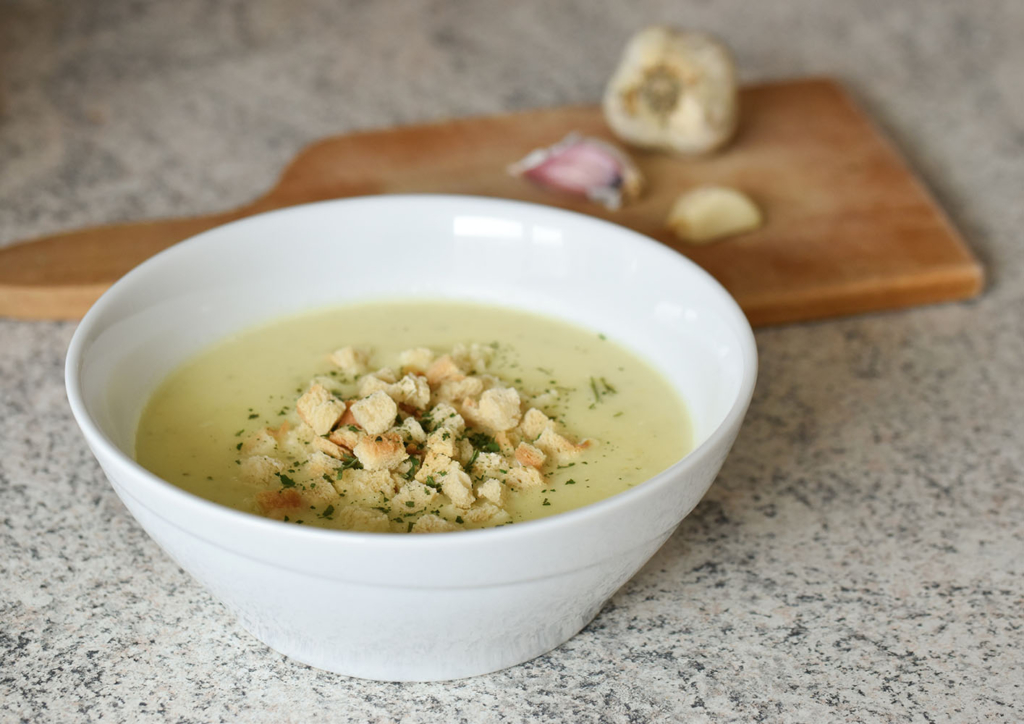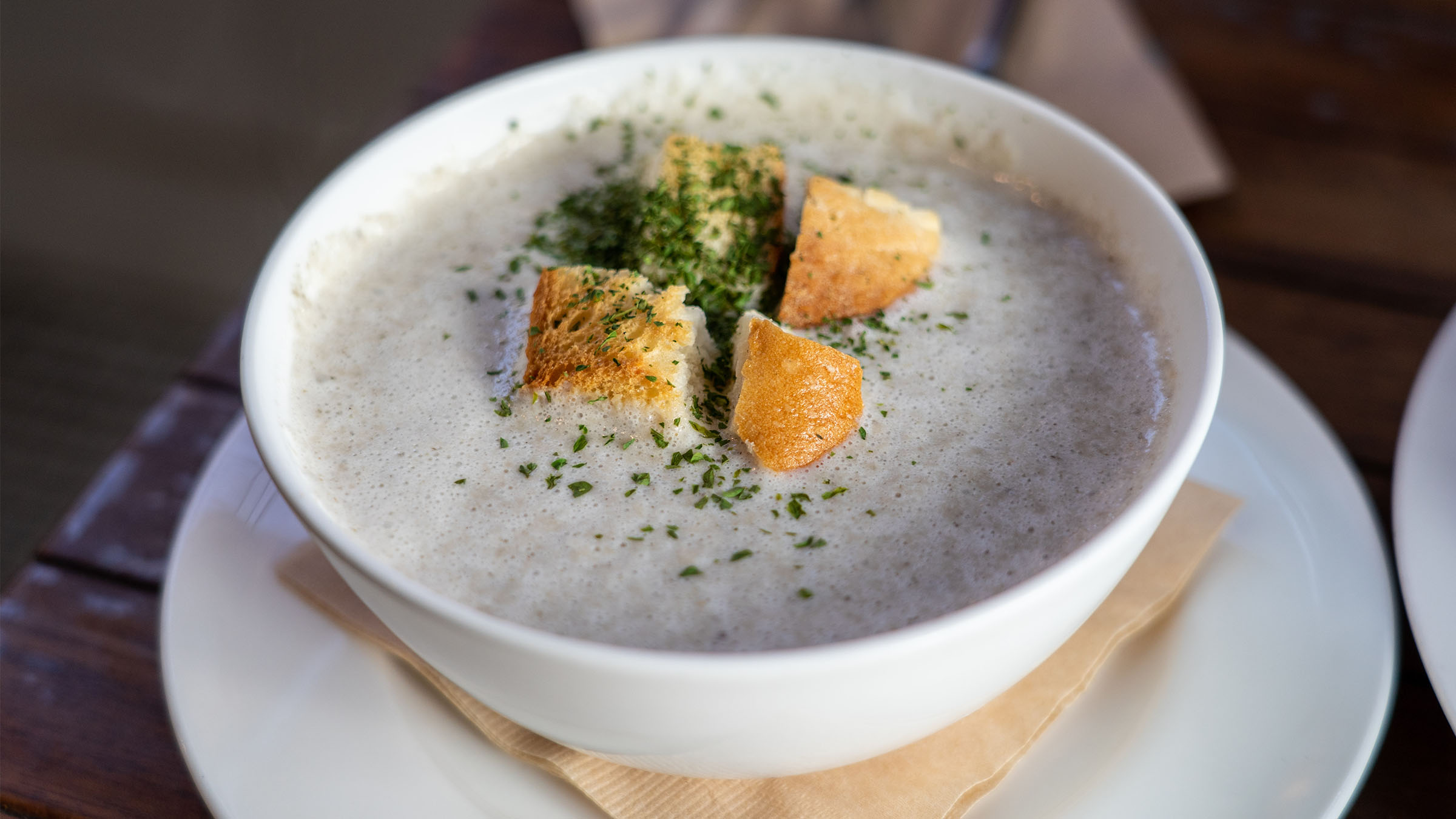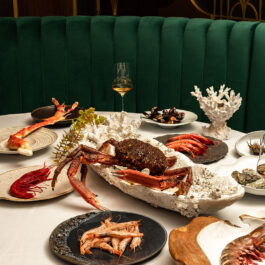Hot potato, cold potato…however you serve it, Vichyssoise is always a hit. Also aptly known as potato leek soup, Vichyssoise is made from just that – in addition to onions, cream and chicken stock. A perennial comfort food that is both simple and satisfying, it was originally conceived as a cold soup, but can also be heated up as needed to meet the caprices of spring weather.
The Chef Behind The Soup
Like so many recipes in the Western culinary canon, the origins of Vichyssoise soup are a little murky. Many attribute the dish to 19th-century French chef and pâtissier Jules Gouffé, who left an indelible mark on French cuisine and published a number of essential cookbooks still in use today.
Another theory claims that French King Louis XV was so afraid of being poisoned that he insisted a number of servants taste his food before he did, which meant that soup turned cold before it reached the king.
Most evidence, however, suggests that the recipe was actually born in New York City at the Ritz-Carlton hotel. In 1917, head chef Louis Diat was inspired to recreate a potato and leek soup that his grandmother used to make. She served it year-round, and Diat affectionately recalled he and his older brother pouring cold milk on it during the summer months to cool it off. For the Ritz’s restaurant version, he began with a simple potato and leek purée, strained it twice, and added heavy cream and a sprinkling of finely minced chives.
He called it crème vichyssoise glacée, after Vichy, a city not far from his native (if much lesser-known) city of Montmarault. The dish took off immediately and became a mainstay at the hotel all year round. Diat later published the recipe in his book Cooking à la Ritz.

How Make Vichyssoise Soup
The recipe is relatively simple and allows for a number of substitutions or variations, including vegetable-based milks and broth. You can easily swap out leeks for onions (or use both, as Diat does), and just about any type of potato will do.
The Recipe
Recipe from Louis Diat’s Cooking à la Ritz
Serves approximately eight people.
4 Leeks (white part)
1 Medium Onion
2 oz (56 grams) sweet (unsalted) butter
5 Medium Potatoes
1 Quart (950 ml) Chicken Broth
1 Tablespoon (14 grams) Salt
3 Cups (700 ml) Milk
2 Cups (475 ml) Heavy Cream
Chopped Chives, for garnish
Most of the work is in the prep; leeks are notoriously a chore to clean. They grow partially underground and tend to capture particles of dirt and sand between their tightly packed layers.
Start by removing both the rooted base and the tough green leaves at the top. You’ll need a very sharp knife, as leeks can be slippery and stiff at the same time. Toss out the roots and save the leaves for homemade stock, if you’re up for it. Cut the stalks into halves, about 4 inches/ 10 cm long, and then halve them lengthwise.
Fill a large baking dish with water and soak the leaves while rifling through them to check for dirt. If you forget this step, you can always give your finely chopped leeks a bath prior to sautéing them – just be sure to use a deep bowl so that bits of dirt have space to sink to the bottom when you scoop the sliced sleeks out with your hands or a small sieve.
Next, peel your potatoes. Use a mandolin or a sharp chef’s knife to slice the potatoes as thin as possible, and then chop them into small pieces.
Melt the butter in a large soup pot over a low flame, and sauté the leeks and onions for about five minutes or until tender and almost transparent, but not browned. Add the potatoes, broth (or water) and salt.
Simmer for 15-30 minutes, or until the potatoes are soft. The smaller you cut them, the shorter the cooking time. Give it a stir every so often to keep it from sticking.
At this point you can use an immersion blender or a food processor to whirl the ingredients into a smooth, creamy consistency. Use a strainer to remove any remaining chunks, and stir in the cold milk and cream. Refrigerate or heat up as needed, and garnish with chopped chives.
Additional (though hardly required) garnish options include croutons, thin strands of crispy bacon and a dusting of nutmeg, to bring out the earthy, warm flavours of the main ingredients.














Sorry, the comment form is closed at this time.